
The Wall of Tears in Galapagos Islands: A Historical Exploration | Travel Blog
Recognized as El Muro de las Lágrimas in Spanish, the Wall of Tears stands as a paramount historical landmark within the Galapagos Islands. While the islands' astounding wildlife often takes center stage, their rich human history is an equally compelling narrative that warrants exploration. Discerning travelers are earnestly encouraged to delve into this often overshadowed facet by embarking on a journey to significant historic sites like the evocative Wall of Tears.
Table of content
- Wall of Tears, Isabela Island: Tracing the Path of the Past
- Reaching the Wall of Tears: Embarking on the Optimal Route
- El Muro de las Lágrimas: A Portal to Historical Significance
- Safety Precautions: Navigating the Path of History
- The Haunting Legacy of the Wall of Tears: Unraveling Its Dark Past
- The Pain-Wrought Path: Tragedy and Sacrifice
- Echoes of the Past: A Haunting Specter
Wall of Tears, Isabela Island: Tracing the Path of the Past
Gracing Isabela Island, the Wall of Tears beckons visitors along a scenic route characterized by a shifting terrain from soft sands to rugged gravel. This meandering path closely follows the shoreline, revealing stunning ocean vistas just beyond the outskirts of Puerto Villamil. A treasure trove of captivating experiences awaits en route, ranging from panoramic viewpoints and tranquil beaches to verdant mangroves, promising an expedition replete with multifaceted discoveries.
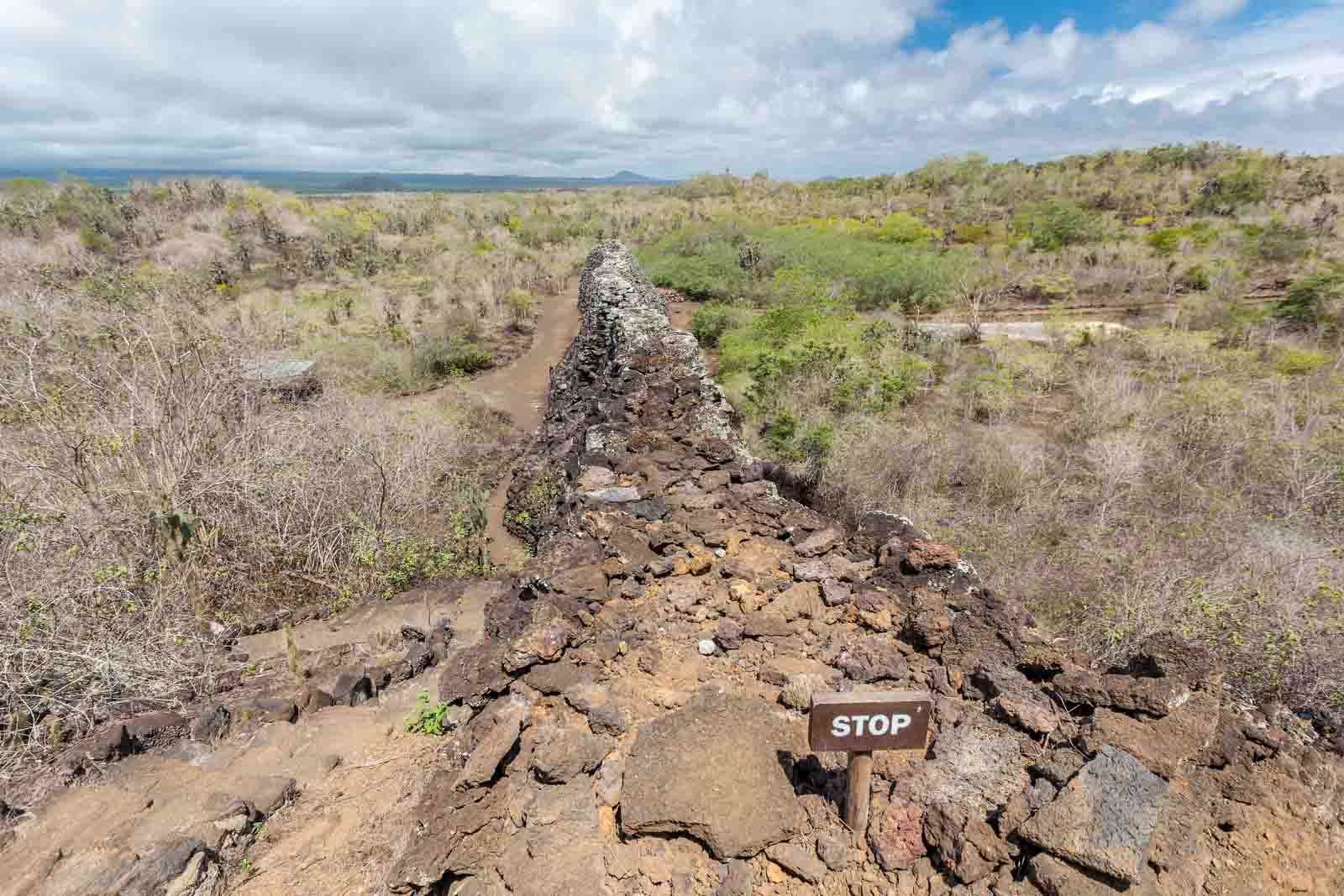
Reaching the Wall of Tears: Embarking on the Optimal Route
For an immersive and unhurried encounter, a recommended approach involves securing a bicycle rental from the assortment of shops nestled in Puerto Villamil. While traversing this route on foot is certainly viable, it necessitates a considerable timeframe—roughly 2 hours each way. In stark contrast, cycling reduces the commute to approximately 1 hour each way, elevating the efficiency and agility of your journey. Notably, in a concerted effort to preserve the delicate local ecosystem and its inhabitants, the transportation of visitors via cars or taxis to the Wall of Tears has been restricted.
Voyagers Travel Offers several tour packages that include a visit to Isabela Island and the Wall of Tears:
The expedition along the predominantly coastal pathway introduces a terrain that is predominantly level, punctuated by occasional manageable inclines. The return leg of the voyage, characterized by its more accessible nature, serves as a satisfying counterpoint to the initial endeavor. In anticipation of the tropical climate and exposure to the elements, prudent preparation is indispensable. Adequate hydration, a reliable application of sunscreen, and a replenishing snack are indispensable companions, shielding against the intensifying heat and ensuring an uninterrupted exploration.
El Muro de las Lágrimas: A Portal to Historical Significance
Named in commemoration of the arduous labor endured by prisoners during its construction, El Muro de las Lágrimas holds a place of reverence within the annals of history. Beyond its architectural symbolism, the Wall serves as a conduit to the past, inviting contemplation of the adversity and resilience that define human experience. The journey leading to this venerable edifice is, in itself, an expedition laden with historical and emotive resonance.
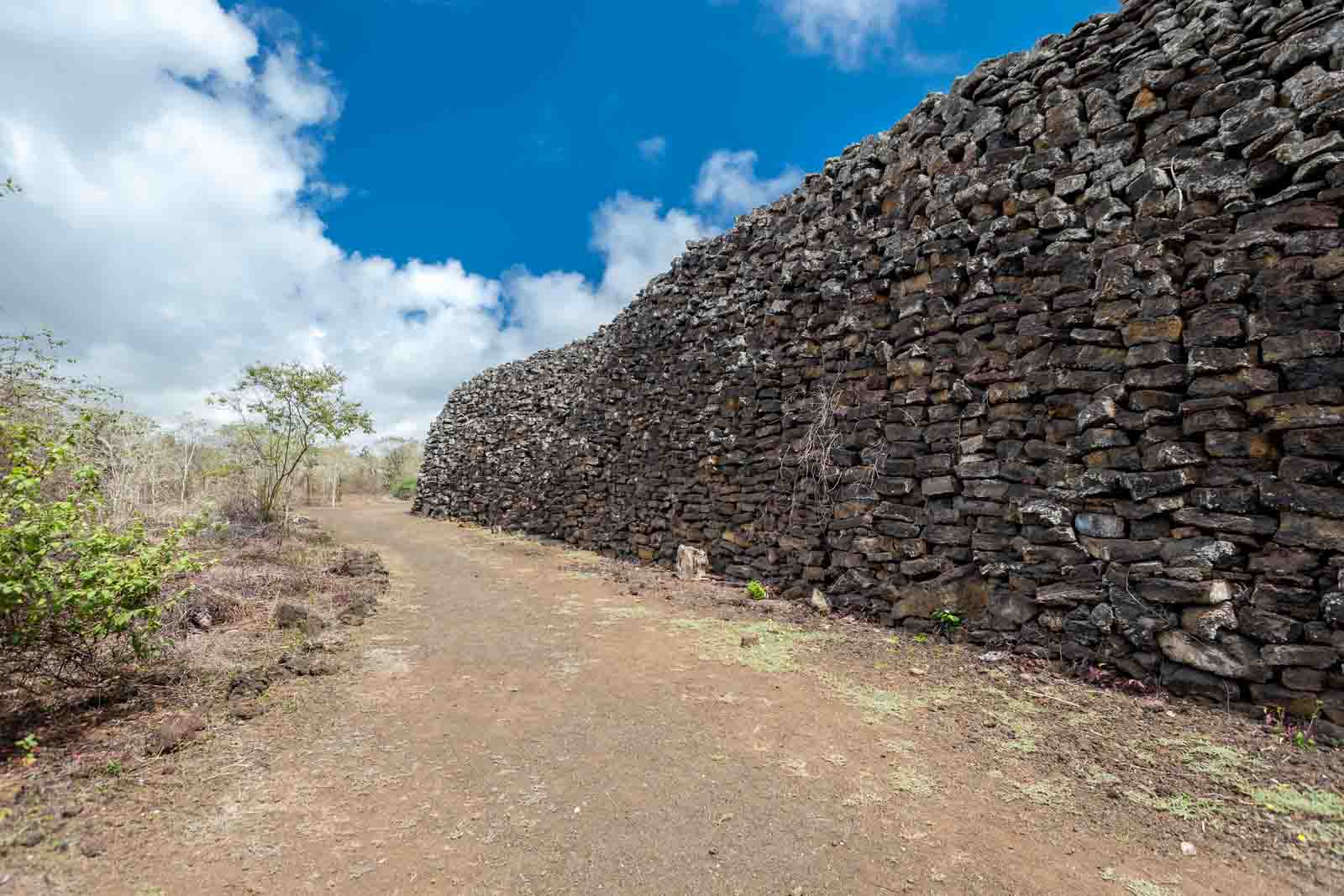
Safety Precautions: Navigating the Path of History
Given the self-guided nature of this endeavor, a heightened level of vigilance is imperative. This is particularly true for those embarking on the bicycle route, necessitating acute attention to fluctuations in the path such as potholes and sandy sections that may pose navigational challenges. Fidelity to designated routes is not only an exercise in responsible tourism but also a safeguard against encounters with prickly cacti and jagged lava rocks that punctuate the surrounding landscape. Amidst the pursuit of historical enrichment, the uncompromising prioritization of personal safety is paramount.
In conclusion, the Wall of Tears represents a juncture where the past converges with the present, inviting discerning individuals to explore a historical tapestry woven into the very fabric of the Galapagos Islands. With due respect to its profound legacy and the natural environment it inhabits, this historical sojourn beckons those willing to embark on a transformative voyage of discovery and introspection.
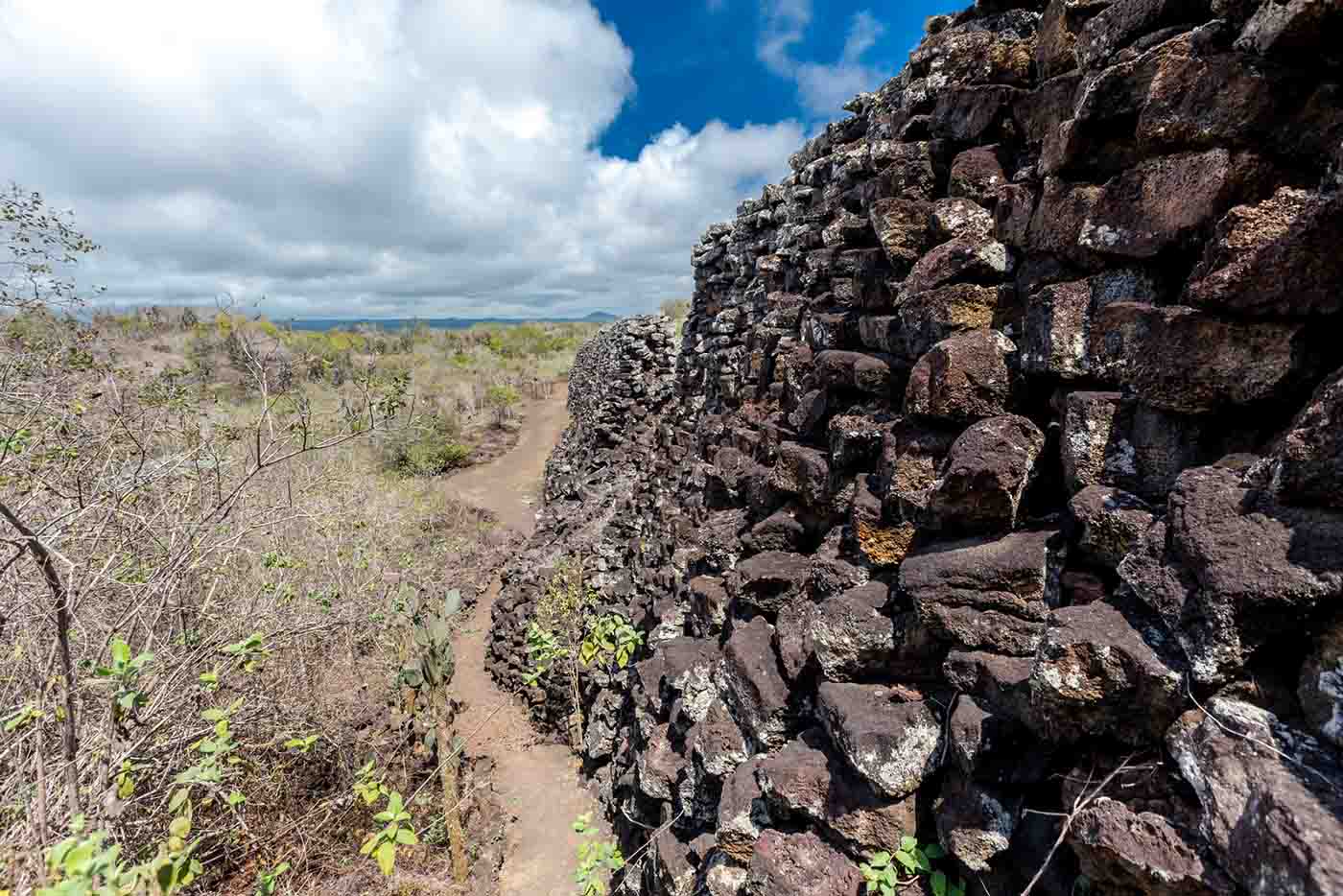
The Haunting Legacy of the Wall of Tears: Unraveling Its Dark Past
The enigmatic Wall of Tears, an imposing structure entrenched within the Galapagos Islands, conceals a history that is anything but pleasant. Constructed during the 1940s and 1950s, this wall stands as a somber testament to the toil and suffering endured by prisoners dispatched to Isabela Island. Chosen as the site for a penal colony due to its remote and inescapable nature, the incarcerated individuals undertook the Herculean task of erecting this wall manually.
Under the searing tropical sun, prisoners painstakingly collected unwieldy, jagged lava rocks scattered across the island, meticulously positioning them to assemble the wall. While some speculate that the wall might never have been completed, intended only to demarcate a prison zone, it is more plausible that this endeavor was an instrument of punishment—a punitive exercise to break the spirits of those exiled here. The perplexing decision to construct a towering, extensive wall in such isolation suggests a malevolent intent to intensify the prisoners' misery.
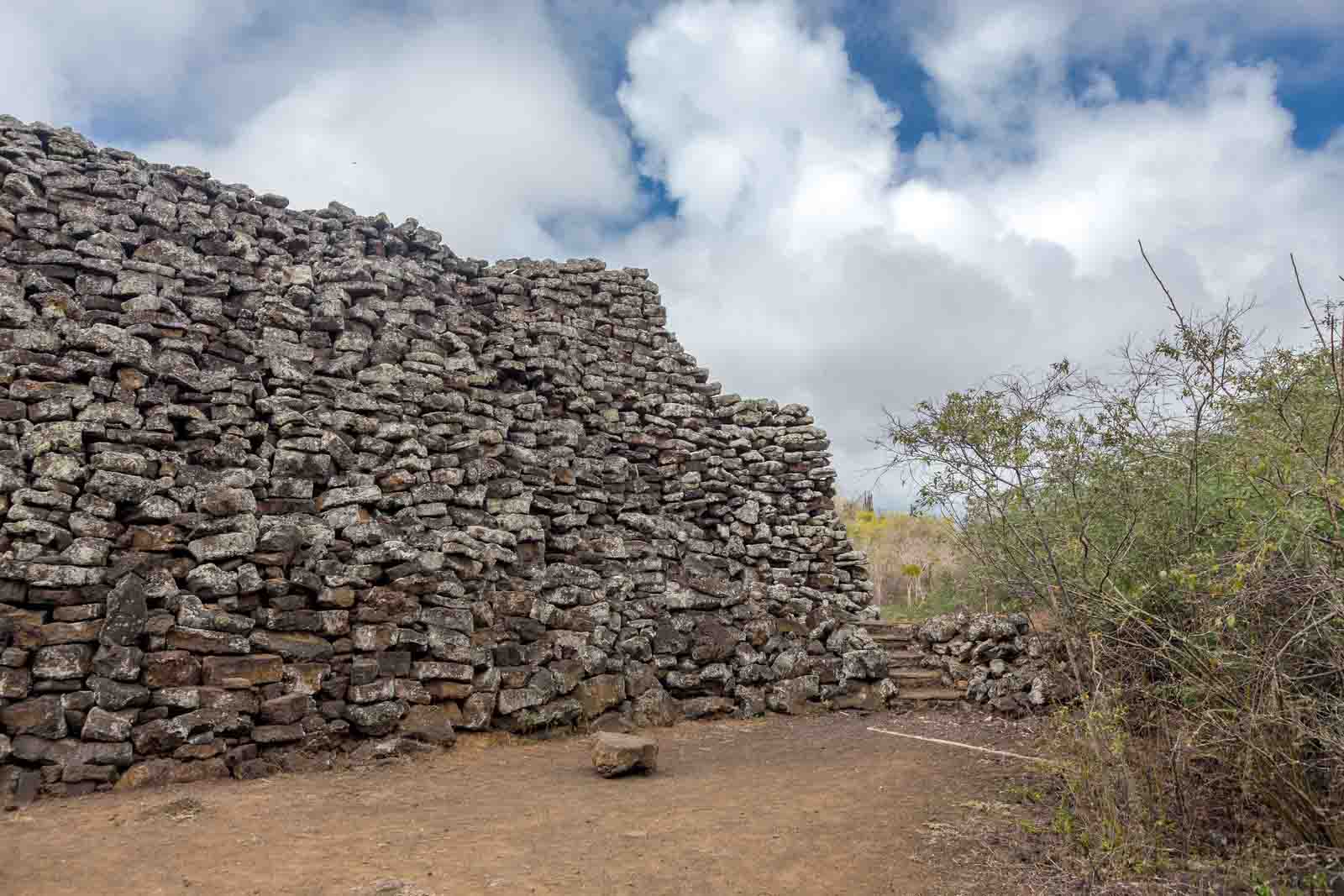
The Pain-Wrought Path: Tragedy and Sacrifice
Legend has it that the Wall of Tears exacted a grievous toll, claiming the lives of thousands of prisoners. A litany of injuries, mishaps, exposure, and deplorable treatment conspired to bring about the demise of many within its confines. Even the most resilient and robust among these individuals were ultimately subjugated and enfeebled by their ordeal. Thus, the wall's poignant moniker is derived from the anguished cries and unbidden sacrifices of those coerced into constructing it.
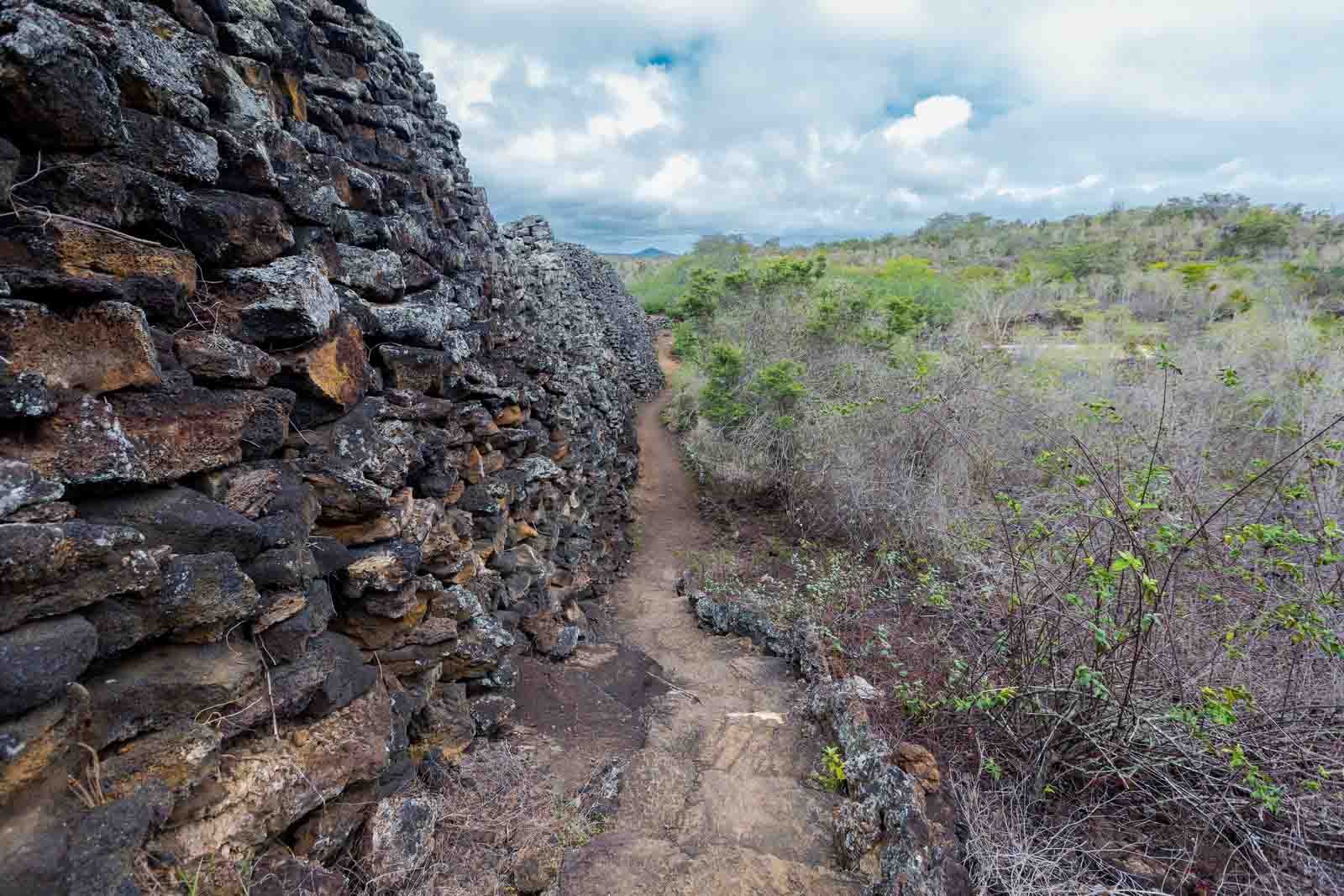
Echoes of the Past: A Haunting Specter
With the cessation of the wall's construction, Puerto Villamil transitioned into a serene, idyllic town. Descendants of the families linked to the wall's builders continue to inhabit the island, their presence imbued with an eerie aura. Locals, in their collective wisdom, believe that the Wall of Tears resonates with an eerie energy—one that echoes the lamentations of the departed souls who succumbed during its construction. Approach its vicinity, they say, and you may discern the spectral echoes of wailing and mourning. This solemn place, steeped in the anguish of history, exudes an almost palpable sense of foreboding.
Yes, merely composed of lava rocks, and yes, perhaps left unfinished, the wall nonetheless serves as an evocative canvas onto which one can project the travails of the past. As you stand before its colossal presence, cast your thoughts back to the countless men whose toil and suffering have become the indelible marks etched into this stony edifice. In this contemplative moment, one can scarcely fathom the conditions these laborers endured, a chapter of human history marred by torment and desolation.
Check Our Galapagos Cruises:



